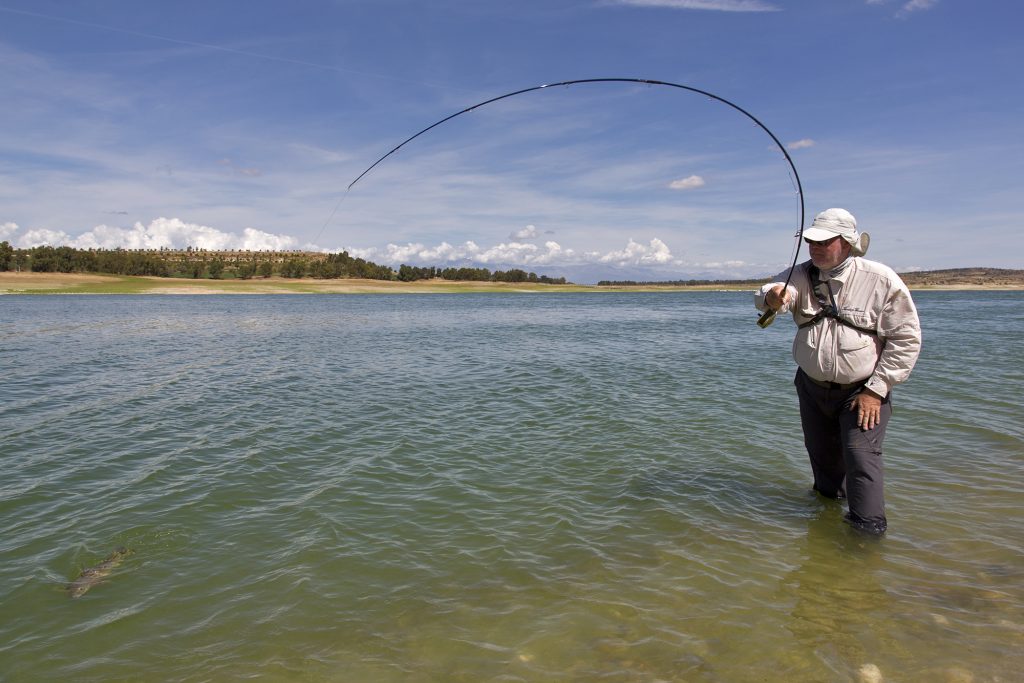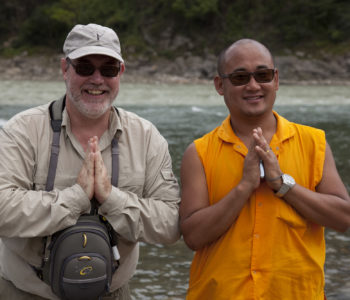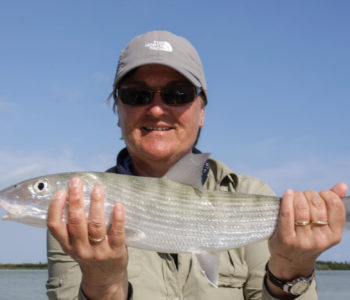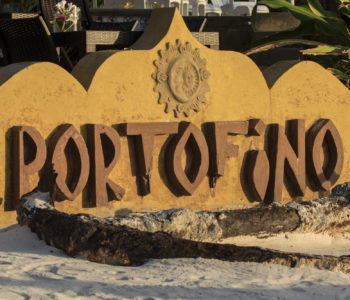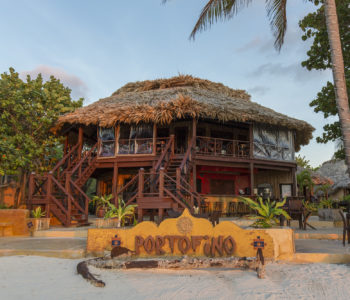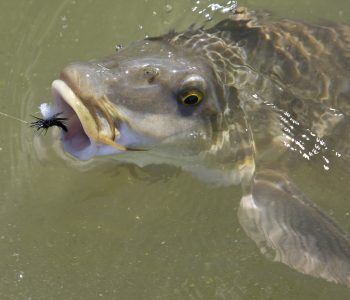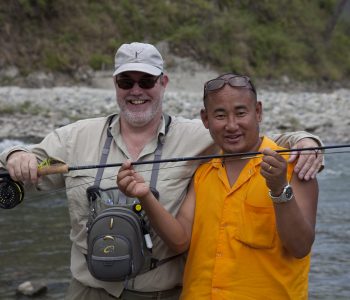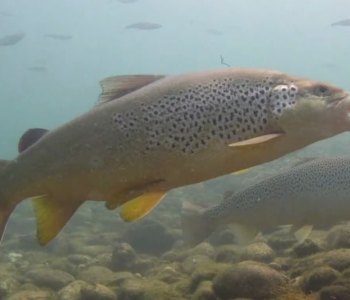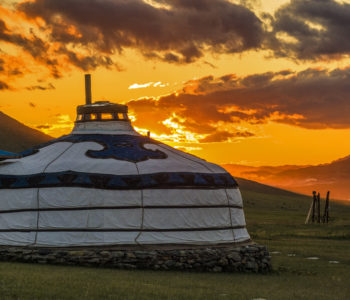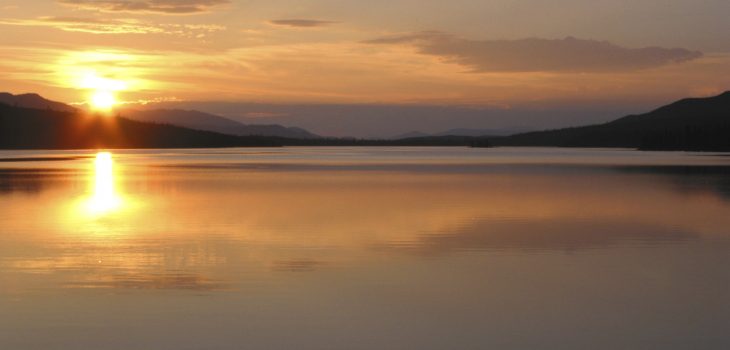
Fly fishing for freshwater bonefish (part 1)
by Hans van Klinken
In May 2010 I had a deep discussion with two Australian and four Asian fly fishermen about catching “coarse fish” with dry flies. We also were talking about whether it was worth traveling to foreign countries just to fish for coarse fish species only. It was a very interesting conversation because many Dutch, Asian and Australian fly fishermen really don’t mind casting a fly to any kind of species. In my home country, Holland, where all the wild salmonids are long extinct, fly fishing for pike, rudd and orfe is still enormously popular. I also believe that it is a matter of paying respect to all fish species, and accepting them as game fish too. I know of many freshwater species, while not belonging to the salmonids that are unbelievable fighters, especially when caught with a fly rod. I also think that the species available where you grow up and learn your fly fishing are responsible for how your fly fishing attitude is developed. Of course I think highly of the history of fly fishing and love to read about it, but Dutch fly fishermen in general don’t have any fly fishing history nor traditions and that perhaps is the reason why I stay so open to do fly fishing experiments; try different techniques and develop flies that really can make a dry fly purist upset! Personally I test a lot of flies and materials on species that are widespread in our Dutch waters such as rudd, roach, asp, carp, ide, chub, pike, zander, perch and even bream.
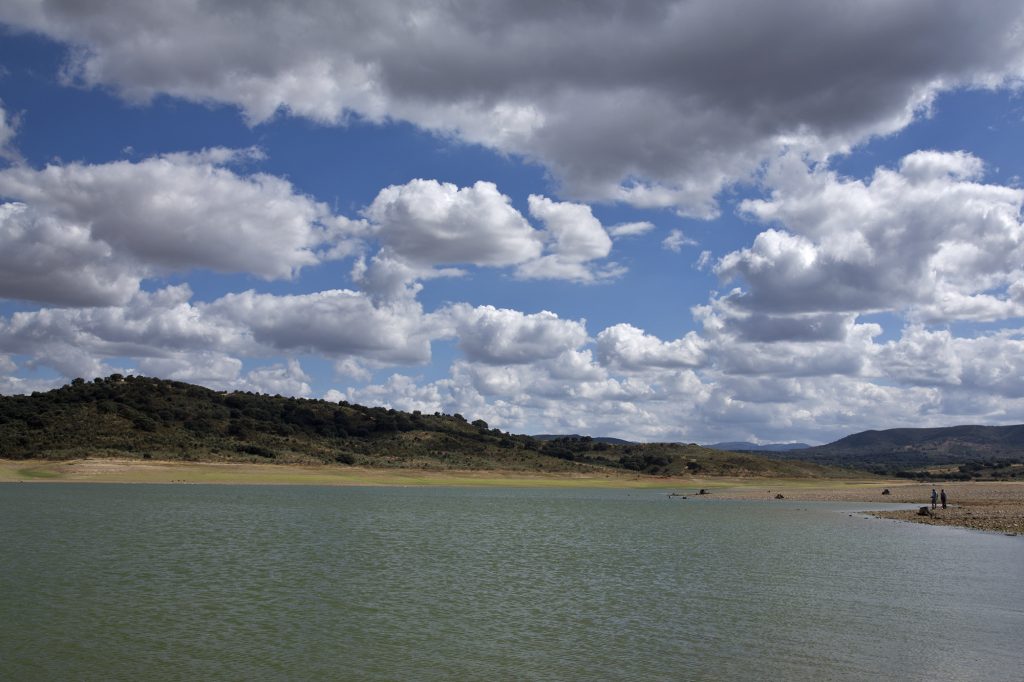
Nowadays I know a lot of fly fishermen who start their sport in countries where there are no salmonids at all. I also know quite a few passionate salmon fishermen who happily fish for coarse fish using a fly rod as well. On the other hand, I know a good number of fly fishermen who see fishing for salmonids as the only true way of fly fishing. There are even fly fishermen who claim the only correct way of fly fishing is using a dry fly and only fish for trout using an upstream cast. I fished dry flies only the first 10 years of my fly fishing career and even today I primarily use floating flies for Atlantic salmon when the weather conditions allow me, so I know a lot about dry fly mania myself. I love dry fly fishing most of all and there is nothing more exciting than when a large fish comes up to the surface just a few meters in front of you, its great sickle tail scything the surface leaving barely a trace of its presence. This is an electrifying sight, certain quickens the nerves of any fly fisher. I love head and tailing fish and it always gets my heart beating faster. I fish with quite a few dry fly purists from time to time and I respect them for their views, but in spite of that we can get along well with each other, I will not hesitate to grab a nymph or heavy bottom bouncer when I know that the fish are mainly feeding on the bottom.
From my early days of fly fishing till 1986, most of my fishing hours were spent in the arctic regions of central and northern Scandinavia where I was hunting and testing my flies on salmon, trout, grayling, sea trout, whitefish, char and sea run arctic char. However, outside of my holidays, my local fly fishing was mainly done in Holland and the northern part of Germany where the only option is coarse fish. I was just forced to it by location, at least when I wanted to go out for a couple of hours in the evening. People who are familiar to fish for none-salmonids know very well that it is not easy to tempt some species of freshwater fish. I even see it as an enormous challenge when people tell me:”That fish is impossible to catch with a fly”. I strongly believe that you can catch every fish that eats insects or fish with a fly. I caught eels on a fly and even some algae eaters like mullet. I remember very well that I once fished with a good Norwegian friend in Holland for bream and all he told me afterwards was that it was easier for him to catch a salmon than bream. Perhaps this is why Dutch fly fishermen do so well when fishing abroad.
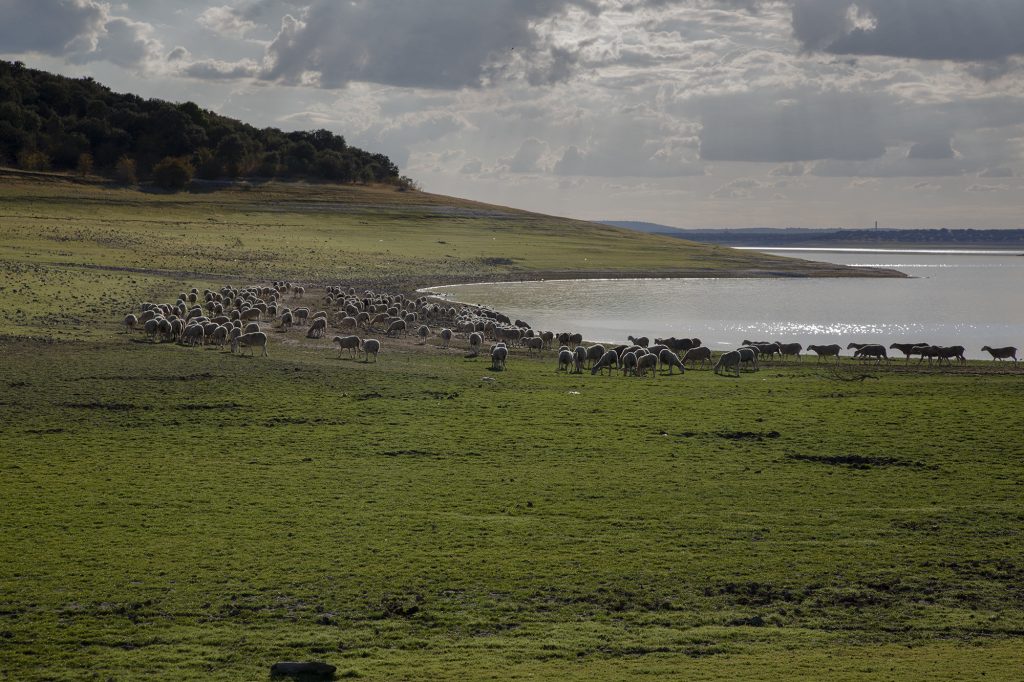
After 1986 when I started to travel a lot more outside Scandinavia, I preferred to split up my fly fishing into a few different categories. Please note that this is just a personal choice and that I only use this for myself and a few close friends with similar thoughts. Of course my top target was salmonids for a very long time but as I grew older and reached different stages in my fly fishing, my respect for different species has also grown as well. My types of fishing nowadays are: salmonids, freshwater species in arctic and subarctic regions, tropical freshwater species, saltwater species in arctic and subarctic regions and saltwater species inical regions. To divide up my fishing this way also turned out to be extremely important for my particular way of fly tying as well, as it allowed me to develop quite a few patterns that I successfully use for all these types of fishing and still come up with ideas for new patterns every season.
How a fishing trip evolved
Let’s get back to present day and tell you a little about a recent fishing trip that I made to Spain in September 2014 while fishing dry flies for barbel. My curiosity was awakened in December 2013 when famous fly fisher, fly tier and author of the book on the use of Coq de Leon feathers, El Pardón de Meana yla Plume de Gallo De León Luis Meana, was talking to me about what he called; “the ultimate dry fly fishing experience”. He also described it as “the perfect school for bonefishing”, and I simply had to put it on my wish list as a very high priority. Spain is not that far off and the costs are affordable. I caught a lot of barbel in the River Kyll in Germany in the 1990’s, but only with heavy nymphs. The power and their amazing fight I remember well. I had also never heard about any barbel caught on dry flies in central Europe and that presented a huge challenge. It seems that Spain is one of the few countries in the world where it is possible to catch barbel on dry flies and when Luis finally showed me some remarkable ‘bonefish lookalike’ videos around Christmas, I made a booking for September 2014 right away. All I wanted was to catch this unique “freshwater bonefish” and see and feel how the Iberian barbel competes with the real bonefish that I caught in Cuba. The season for barbel is from April till the end of June and from September up into December. The entire season is good but the catches in September and October are most plentiful, which is why I picked a week in September.
In the months following, Luis had sent me tons of information to prepare me well. I added all the knowledge that I had achieved in my fly fishing for a fish that we call “winde” in Holland. The English name is ide (Leuciscus idus), or orfe and it is my most popular Dutch freshwater fish by far, especially in springtime when the hawthorns are hatching and the fish go completely mad. During spring and early summer I am able to catch them on very large ant and beetle imitations, which I let dance on surface to attract them even more strongly. Since 1986 I hardly missed this prime time of the year and most of my terrestrial and beetle imitations and fishing techniques are based on the amazing surface hunting strategy from this magnificent fish. The ide species belong to the Cyprinidae family and are spread across northern Europe and Asia. They populate larger rivers, ponds, and lakes, often travelling in schools,, but the large species are solitary hunters. I was thinking that my fishing knowledge about ide would be a big pro while fishing with dry flies for barbel and I turned out to be very right indeed!
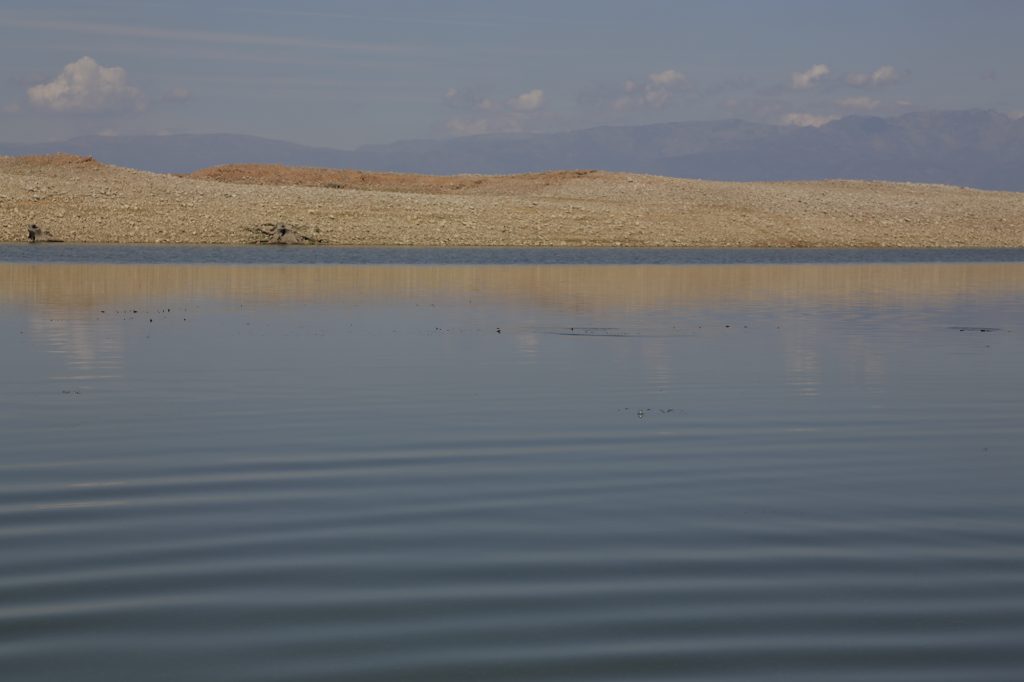
My trip
On the 8th of September 2014, Carsten Dogs from Germany and I arrive in Madrid where we both got picked up by Luis in the late afternoon. A couple of hours later we arrived at the main fishing area, a huge reservoir approximately 7500 hectares in size. As a fanatic bird photographer I was completely in awe by the high number of birds around the lake and I immediately regret that I didn’t take my big telelens. The temperature reached almost 30 degrees Celsius and the weather forecast for the upcoming week was looking excellent. All we needed was sunny weather and some wind. While traveling to our accommodation, Luis made a quick stop at the lake to give us a first impression of the landscape before the sun really sets. The fishing was planned from the next day anyway.
Luis has fished for barbel his entire life, is quite addicted to it and told us all he knew about the species in Spain and those that are most important for fishing, such as Barbo común (barbus bocagei), barbo comizo (barbus comiza), barbo gitano (barbus sclateri) and barbo becero/cabecicorto (barbus microcephalus). You can catch all these species on dry flies but it isn’t easy at first, as Carsten and I found out during the days to come. You really need a helping hand and to learn the tricks firsthand from an experienced guide to be successful. Of course you will finally manage when trying alone, but I am sure you will waste much valuable time when you only have a few days fishing. The biggest problem will be finding the fish and that’s why you will need a skillful guide. With Luis’s amazing experience and helping hand as a professional fishing guide, barbel fishing suddenly becomes not that hard and difficult anymore. Barbus bocagei was our target because it is the most interesting species for us fly fishers and they are the strongest fighters too. Each time you hook into a good size fish, the line will leave your screaming reel with unprecedented speed, without you realizing what is happening. Barbel from five pound up easily pull out many meters of backing! While listening to Luis’s stories, we walk around and gaze at the lake where we quickly spotted the first cruising, tailing and finning barbel, and it didn’t took long before the barbel fever get hold of us. It was time to check in at the special lodging that Luis had arranged for us.
Luis accommodated us in a beautiful traditional Spanish rural house without any other guests and the intention was to let us feel home as soon as possible. His idea of hosting and guiding people was based on the fact that a spectacular fly fishing trip needs good and unique accommodation. Lodging in a private and exclusive atmosphere, without being interfered by any other guests, is what Luis strives for. This is why every fly fisher has his or her own private room. After an tour through the house we were both impressed by this incredible place. There was a huge terrace that we also used to enjoy our meals, a very cozy living room with open fireplace, a swimming pool, and everywhere were beautiful flowers and plants. Once unpacked, showered and dressed for the much higher temperatures, we were introduced to Spanish gastronomy, and after dinner to Luis’s secret world of the Iberian barbel.
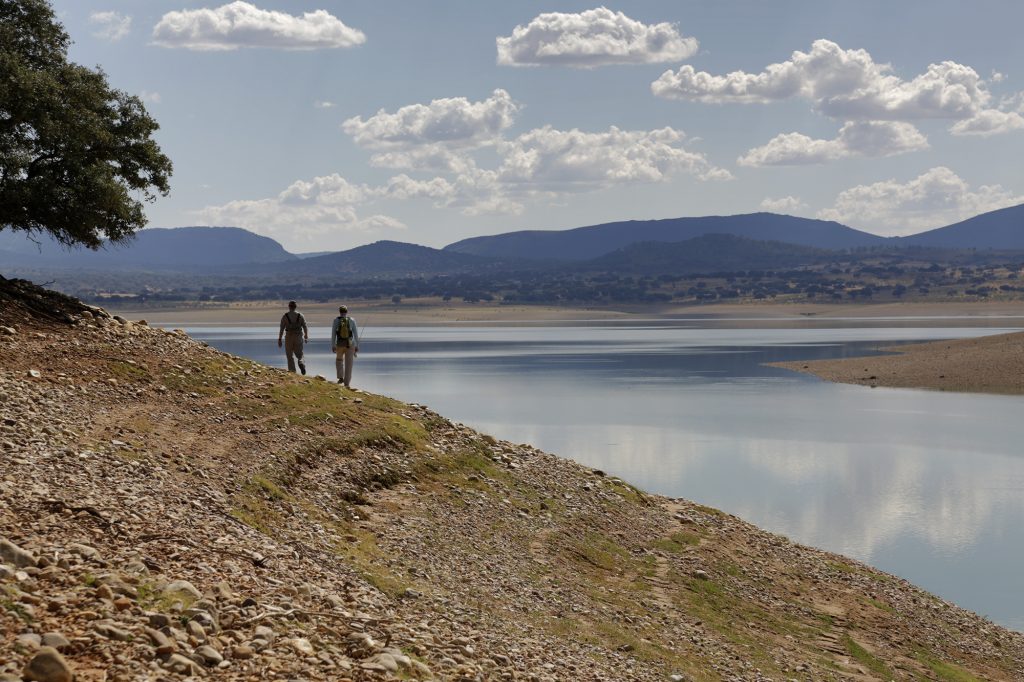
Barbell fishing in Spain is done in lakes, reservoirs and rivers and each location offers its own particular challenges and delights. In general, and as we experienced ourselves in practice, it is more difficult to catch barbel on dry flies in a river then in the lakes and river barbel put up stronger fights. The reservoirs we fished all were created by damming the rivers for extra water supplies and hydroelectric power. The barbel got trapped but adapted themselves extremely well into their new habitats. Luis explained that when you exclusively go after barbel it is impossible to plan your fishing locations in advance. All depends on the weather conditions and how a guide reacts to them. This makes guiding for barbel quite a tough job. A sound geographic knowledge is indispensible and every morning we were witness to how Luis searched for the best possible locations. With high quality topographical maps and compass he used the actually wind direction to find the best coves or flats for us for each particular day. The wind direction decides where you go because you want to fish for feeding fish and not end up in a cove covered in a thick layer of green algae. River fishing turned out to be a perfect alternative when there was no sign of wind, or when it is cloudy, because during a windless day it is extremely hard to induce barbel to the fly and when it is overcast it is almost impossible to spot them. During our visit the weather gods were extremely kind to us which made it possible for us fish at different locations and it also created conditions in which we were able to try several different fishing techniques as well.
The fishing
The first day we spent most hours fishing at huge flats that were teeming with barbel and carp. The high number of fish was a great help in our learning process to gain the basic fishing techniques for barbel. We had a great time and did very well with reasonable catches, until the wind changed direction and slowly started to blow in some algae and spoil our wonderful fishing. A good wind usually blows away the algae and the waves cause them to sink, but a poor wind does just the opposite and brings algae in and leaves them on the surface. After our first shore lunch, we moved to another place but only for a quick look because the conditions turned out not so good as the wind had change direction again while we driving. We ended our day not far from our accommodation where Luis taught us the first basics in shoreline fishing which was very different and more active than what we did on the flats.
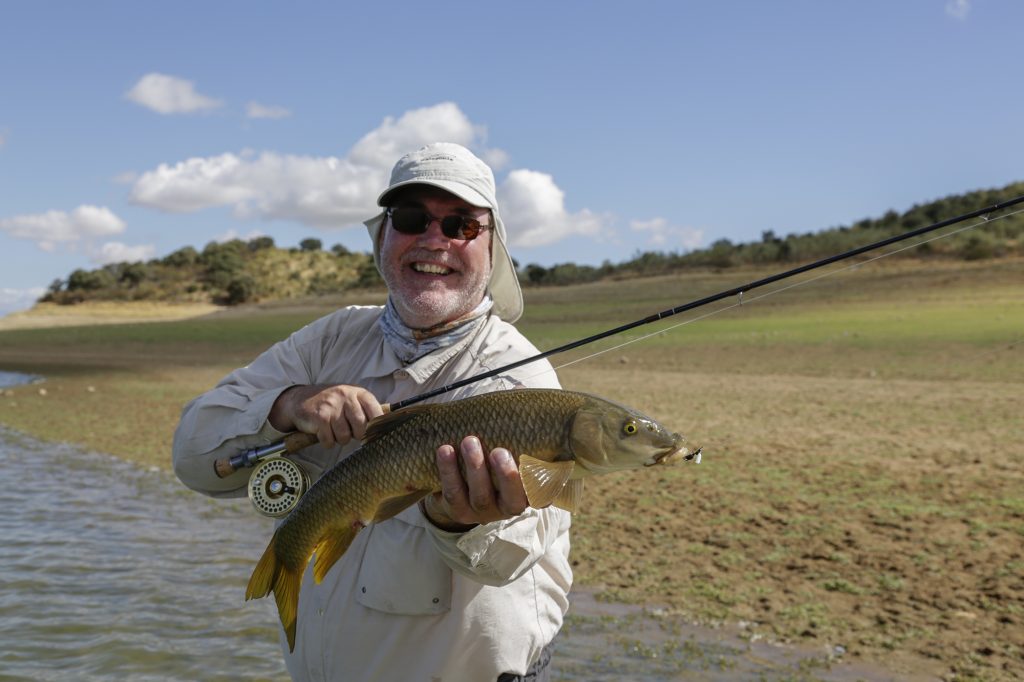
The second day there was hardly any wind so we spent the whole day on the river. It was an unbelievable experience and we learned a lot. The area that we fished was not far from the outlet of a dam and therefore had created a complete tidal environment with levels depending on how many turbines were in use. The barbel had found a wonderful biotope to survive in and feed well on the changing circumstances, while for fishermen perfect timing is crucial to be successful in these much tougher fishing conditions. The current can be strong and the water can come up and drop fast so without a guide it is a dangerous place to go. During river fishing we also used dry flies only and although we caught all our fish strictly by sight fishing, it turned out that timing was crucial in fishing a tidal river. We recognized very quickly that there were a few moments in which the barbel were feeding on dry flies like crazy. Shortly before the water had reached its maximal level and during the moment that the water started to drop, we had the best possible river fishing for barbel of the day. When the water had dropped to the minimal level the fish shoaled up and were easy to spot but incredibly spooky and therefore extremely hard to catch. The challenge was enormous, but we didn’t catch any fish.
Although barbel are by nature perfect bottom feeders it is difficult to understand why they feed so intensively at the surface and why they constantly cruise the shallows and shoreline of these huge reservoirs. My own theory is that over the years the abundant food supplies like hoppers, beetles and flying ants must have changed their feeding behavior so drastically that it made the Iberian barbel a highly respected freshwater bonefish. Like Howard Day wrote so nicely in one of his barbel articles: “Clear, shallow water turns these bottom feeding monsters of the deep into upside-down bonefish with all of the muscle and fight of a flats fish”.
